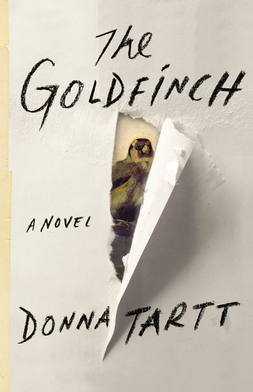 Putting down Greeth, by Charles LaFave, a 380-page mammoth of a novel, I'm still trying to comprehend how I feel. I spent a lot of time with this dark fantasy, gory horror, noir-style novel, and I am left with many questions left unanswered. The creature called Greeth, for one, what is she? Who/what are those beings called the Others and why are they so important that they are mentioned many times throughout the novel? What exactly is the conflict of the novel? Is it that Greeth threatens to come back to the human realm? Things happen to the characters in this novel, but it's rarely clear why they happen that way. Having finished reading Greeth, however, one can't deny that there is a certain charm to LaFave's writing style, and the way he rushes confidently headlong towards an unknown destination.
Putting down Greeth, by Charles LaFave, a 380-page mammoth of a novel, I'm still trying to comprehend how I feel. I spent a lot of time with this dark fantasy, gory horror, noir-style novel, and I am left with many questions left unanswered. The creature called Greeth, for one, what is she? Who/what are those beings called the Others and why are they so important that they are mentioned many times throughout the novel? What exactly is the conflict of the novel? Is it that Greeth threatens to come back to the human realm? Things happen to the characters in this novel, but it's rarely clear why they happen that way. Having finished reading Greeth, however, one can't deny that there is a certain charm to LaFave's writing style, and the way he rushes confidently headlong towards an unknown destination.Greeth takes place on an alternate Earth, one where wizards live amongst humans. The action centers on Japan, where wizard-exile Peter Buraku tries to eke out a meager living. Peter is no longer allowed to use magic because he attempted the dark art of returning the dead back to life. The image of his father, an image of a man with no skin, haunts him. How does one prevent a wizard from using magic? Well, a wizard has two hearts, so all one has to do is put a ring made of a metal called palladium around the two hearts so they can't beat enough to cast magic. Peter can use some magic, but not a lot. For example, he still has the ability to heal like a wizard, and he can still create lesser golem creatures.
Peter is probably the main character, though the novel seems to have no allegiance to anybody. Chapters sometimes switch to other characters, such as Julie Alvarez, Peter's one-time girlfriend, and now a human who does service for the wizards as a sort of wizard-killer. There is also Nigel, Peter's best friend, who is a werewolf (so, do vampires exist? Zombies? Ghosts and ghouls?). Thirdly, and perhaps most inexplicably, is an ex-ninja wizard named Hideo, who uses sound magic and spends his time strumming his guitar. He has some nifty abilities, but even by the end of the story I wasn't clear about his purpose. Or that of his sister, whose immaturity and bratty behavior seems to go against her ninja training.
While reading this, I was reminded of the great film noirs that have stories that make no sense, but they're great fun to watch. Greeth feels like that some of the time, and some of the time it feels gratuitous. LaFave is definitely combining genres, but at its heart Greeth is a fantasy, and as a fantasy would have done well to spend some time world-building instead of plotting. LaFave reminds me of a Ursula K. Le Guin, with some mixes of Clive Barker/Stephen King, but he lacks the clarity of Le Guin's world-building. Le Guin allows her omniscient narrator to fill the reader in on details about her world, answering questions and building reader interest. LaFave chooses to allow questions to remain unanswered. Sometimes this works, sometimes it doesn't. But I think as a whole it would have gone a long ways to create a more believable, real world to give readers a greater sense of how it works.
Secondarily, Greeth is a horror novel. Not only does it involve bugs and creepy-crawly things that are haunting the visions of characters, but it contains plenty of gore. Numerous times, characters have guts split open, teeth knocked out, and limbs chopped off, but rarely do they die. Wizards can only die by weapons made of palladium. Humans, however, have the benefit of healing spells cast into capsules that can heal all wounds. But LaFave doesn't keep his horror just to the gory variety, but also uses psychological horror. People see insects crawling all over them and inside them one moment and find the next that it was nothing more than a realistic hallucination. As a horror novel, Greeth is less effective than as a fantasy-noir, but the horror aspects nonetheless add to the story's charms.
So, by the end of this review, I know I haven't given a very solid opinion on the work. There is something enjoyable in LaFave's writing style, the enigmatic way he edges forth his story. Yet it's a story as slippery as its hallucinogenic insects, with an unclear conflict, unknown villain, and underdeveloped world. It's a work I wasn't dying to read, but it wasn't a work I dreaded reading. In the end I would like to give it praise but also a warning - if you need certainty and clarity in your stories, you won't find it here. But that's not necessarily a bad thing.
***The author provided me a free copy of this novel in exchange for an honest review.***




